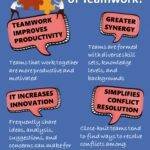
Drawing together is a liberating structure to reveal ideas and paths to follow through non-verbal expression
Drawing Together helps groups to purposefully create space for expressing and interpreting complex thoughts as well as validating their interpretations. Instead of using verbal language as its medium for interaction, it makes use of constrained visual language with five purposefully abstract symbols.
You can help people access hidden knowledge such as feelings, attitudes, and patterns that are difficult to express with words. Stories about individual or group transformations can be told with five easy-to-draw symbols that have universal meanings.
The playful spirit of drawing together signals that more is possible and many new answers are expected. Drawing Together cuts through the culture of overreliance on what people say and write that constrains the emergence of novelty. It also provides a new avenue of expression for some people whose ideas would otherwise not surface.
Four Structural Elements
1. Structuring Invitation
- Invite participants to tell a story about a challenge they face, or a common challenge, using only five symbols and no words
2. How Space Is Arranged and Materials Needed
- An open wall with tapestry paper or easels with blank pages in flip charts
Water-based markers; soft pastels if you are feeling colorful
3. How Participation Is Distributed
- Everyone is included since the five symbols are easy for everyone to draw
- All participants make their individual drawings simultaneously
4. Sequence of Steps and Time Allocation
- Introduce the idea of drawing together by drawing and describing the meaning of each symbol. 5 min.
Circle = wholeness
Rectangle = support
Triangle = goal
Spiral = change
Star person [equidistant cross] = relationship
- Invite participants to practice drawing the five symbols: circle, rectangle, triangle, spiral, star person. 5 min.
- Invite participants to combine the symbols to create the first draft of a story, working individually and without words, about “the journey” of working on a challenge or an innovation. 10 min.
- Invite participants to create a second draft, in which they refine their story by dramatizing the size, placement, and color of the symbols. 10 min.
- Ask participants to invite another people, small groups of 1–4 others to interpret the drawings. Remind them that the person who has done the drawing does not speak. 5 min.
- Ask the whole group, “Together, what do the drawings reveal?” Use 1-2-4-All with larger groups. 5 min.
Purposes and Objectives
- Reveal ideas and paths to follow through non-verbal expression
- Reveal insight or understanding not accessible with verbal or linear methods
- Tap all the sources of knowledge for innovation (explicit, tacit, latent/emergent)
- Signal that a quest or journey in search of new discoveries is under way
- Develop and deepen shared understanding of a vision or complex dynamics
- Create closer connections among group members
- It often helps to frame it as an opportunity to have serious fun while building a deeper understanding of each other and a challenge at hand
Tips
- Drawing Together may feel “too risky” or “too creative” for use with some groups.
- Some groups may also struggle with the visual language.
- If people struggle with understanding “wholeness”, you can reframe it as “unity”, “feeling one with others” or “feeling good and secure with others and yourself”;
- Help participants accept whatever emerges in the drawings (there are often surprises)
- Draw or present an example of a story that helps others make a leap of understanding
- Record the participants drawing with cameras and video recorders
- Remember that drawing can be powerfully therapeutic; be prepared for emotional responses
Examples
- Use it for coaching teams or individuals by inviting them to draw their journey into and through a challenge they face
- Use it during a Sprint Retrospective to ask members to draw their experience of the Sprint. Dig deeper into the patterns that emerge for this; what are common supports? What relationships we are under-utilizing?;
- Use it at the start of an event by asking participants to draw something that relates to the purpose of the event and to them, personally. For example, at the start of a teambuilding workshop, you could ask people to draw their experience with working in teams.
- Use it to navigate conflict by inviting everyone to draw their experience of the conflict. You could even do this in the moment, as a conflict emerges, as a way to express the complex feelings a conflict triggers
- For a refreshing change of pace in a long meeting when a creative burst is needed
- When there are strong differences in perspective and the group is in a rut
- For visual facilitation of a meeting or conference, where drawings are created as the conversation unfolds
- For helping a vision statement come to life (particularly for visually oriented people)
- For individual work, to visualize tacit or latent approaches to a challenge


